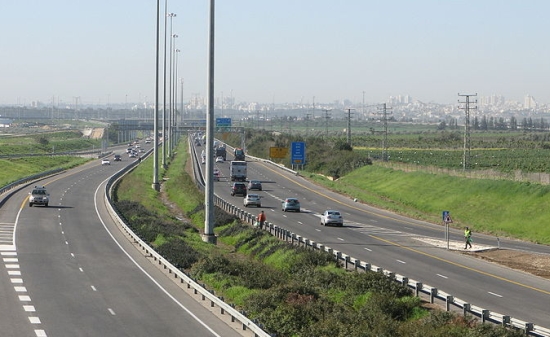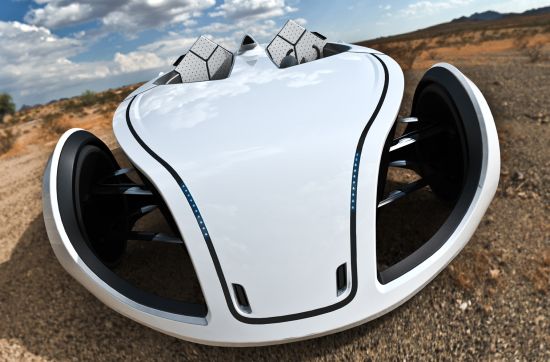
Electricity, as we all know, isn’t easy to generate and even the power that reaches our wall sockets isn’t always green. In an era where everybody seems to be getting interested about renewable energy, there is no dearth of systems that harvest seemingly unconventional forms of energy like kinetic energy, human energy and piezoelectricity. Piezoelectricity is based around the ability of some materials, notably crystals and certain ceramics, to generate an electrical field in response to applied mechanical stress. Though piezoelectricity doesn’t seem practical enough for portable electronic devices, certain designers are working to make it feasible not only for portable gadgets but also on a much larger scale. Here is a list of 12 such systems that rely on next-gen piezoelectric technologies which might well be the future of clean energy:
• Innowattech’s Energy Generating Roadways:
Innowattech is developing technology that would enable a ten-meter strip of asphalt to generate about 2000Wh of clean energy. The plan is to install piezoelectric crystals 5cm below the upper layer of asphalt on open highways. A 1km stretch embedded with these crystals would be able to generate about 200KWh of energy, while a four-lane highway would produce about 1000MWh of energy, sufficient to power about 2500 households.
• Speech-powered Cellphones:
Scientists at Texas A&M University in Houston have found that certain piezoelectric systems become more efficient when they are manufactured at a very small size and they can be used to provide electricity for portable electronic devices. These scientists discovered that when the materials are made extremely thin, their electricity conversion efficiency increases dramatically. Making these materials thin also enables those to be moved by sound or speech, which makes them envision cellphones that will be powered by nothing other than sound.
• Vehicles powered by air flow:
Researchers at the City College of New York are planning small-scale piezoelectric devicesthat can be mounted on the roof or tail or a car or on an airplane fuselage and convert the vibrations into usable electricity. Measuring about half-inch by one inch, the devices won’t be able to replace the power output of conventional engines, but can provide renewable energy to power some systems such as control panels or portable electronic devices onboard.
• Streetlights powered by sidewalks:
Recently Toulouse, France became the first city to stick these piezoelectric pressure-sensitive modules on the sidewalks so that residents can generate power by simply walking down the street. The technology being used comes from a Dutch company Sustainable Dance Club and features embedded micro-sensors that generate electricity whenever pressure is applied on them, which can then be used to power streetlights.
• P-Eco Concept Car:
Envisioned by industrial designer Jung-Hoon Kim, P-Eco is a sustainable concept vehicle that will rely on renewable energy produced by solar panels, wind turbines and above all – piezoelectricity. The car is equipped with multiple chords that vibrate at a high frequency, whenever the vehicle is in motion, to produce electrical energy.
• Bright Walk Running Shoes:
The Bright Walk Running Shoes by Alberto Villarreal feature electroluminescent polymers that are powered by onboard piezoelectric generators. The generators produce electricity whenever you walk or run to power the light emitting devices.
• Powering iPods with heartbeat:
Scientists from the Georgia Institute of Technology have developed new nanosizedgenerators that can convert the energy of movement into electricity, which can then be fed into any portable gadget, including your cellphones and iPods. The newly developed technology, which is based on zinc oxide (ZnO) nanowires, can harvest energy from even the slightest of movements. The researchers associated with the findings claim that devices carrying ZnO nanowires just 25% longer than the diameter of human hair will be able to generate electricity from slight movements, including your heartbeat or the flow of blood in your body. These nanogenerators could have countless applications, the most serious being their use by military personnel, which in most cases are far away from a wall socket.
• Zeri Phone:
The Zeri Phone by industrial designer Paul Frigout is one such cellphone that gets powered by a thermoelectric and piezoelectric system. The cellphone’s piezoelectric system comprises of hair-like generators that produce electricity from the vibration produced by air.
• Portable Power Generator:
Designed by Deco Goodman, this portable energy source relies on piezoelectric devices to generate electricity from the bike’s motion. Energy generated by the system is stored in an onboard battery that can later be used to juice up several portable electronic devices.
• STREAM:
The STREAM concept is designed for highways of the future, which will be able to generate electricity from renewable sources and waste energy for electric car charging stations. The concept will also enhance the aesthetic sense in the range of regenerative energy usage. The system incorporates various elements that are coated with a sturdy piezoelectric foil, which is stretched with it is moved. As a car passes by, the air stream causes the elements to stretch and bend, which generates electricity.
• GO2 Catamaran:
Designed by Chris Rose, the GO2 catamaran is equipped with a piezoelectric dance floor that charges the onboard deep cycle batteries using the kinetic energy of the people who are dancing on it. These batteries then power two electric motors, one on each hull, which can maintain high efficiency over a wide range of speeds.
• Tokyo Railway Station:
East Japan Railway Company has deployed piezoelectric devices in the floors at ticket gates and other areas of Tokyo railway station. The system is intended to generate power as passengers walk through these gates. The electricity-generating piezoelectric devices will cover the area of 25-square meters in total and will be installed at seven ticket gates and seven steps of a staircase inside the gate on the railway station. JR East is expecting that the setup would be able to generate 1400KW/sec of electricity each day and could potentially be used to power the electronic displays of the railway station in the future.




